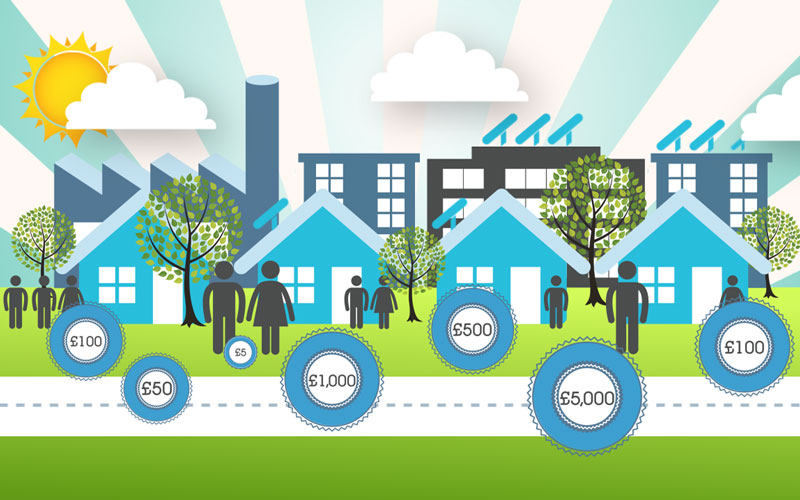Could clean energy represent an annuity alternative?
A shake-up of the pensions market will happen in April 2015. The Government’s decision to make the purchase of an annuity voluntary opens up a whole world of alternative investments to the nation’s newly retired.
One alternative, income-producing asset class that should not be overlooked by older savers is renewable energy – it has characteristics that can make it suitable for those wanting their savings to generate a steady, long-term income.
Why are renewables good at producing income?
Revenues for clean energy projects come from the amount of electricity generated.
This comes partly from the price paid by energy suppliers for the electricity; partly from subsidies. Subsidies are designed to give certainty of revenue, because the subsidy a project will receive is set on the installation date and lasts for a 20-year term, only changing in line with inflation. This, along with the relative predictability of generation, is the reason that clean energy can provide a fairly reliable income.
What sort of return?
Projects that are currently listed on Trillion Fund offer either fixed or variable annual returns in the region of 6 to 7 per cent (check the projects page for current raises).
If you are investing for income, it is important to check the frequency of interest payments on a project (they are usually six-monthly) and that the deal allows you to transfer that interest to your bank account when it is paid, rather than only allowing access at the end of the term.
Some projects pay back both the interest and the capital over time. You don’t get the lump sum at the end but you do get the opportunity to reinvest your money.
Terms can vary from 3 years to 20, so check whether you can sell the investment within the term, too.
Variability of returns?
You can get fixed or variable returns on projects. Variable returns may vary seasonally (solar returns are higher in summer, for example). Fixed rates will be based on the average annualised return. Always check whether the quoted return also includes capital repayments.
Risks?
There is a risk you could lose some or all of your capital – because these investments are not covered by the Financial Services Compensation Scheme. Returns could fail to meet forecasts; developers can go bust.
Projects that are already generating electricity are considered lower risk than those that are yet to be constructed, so it may be wise to stick with post-construction projects if you want more certainty.
Rebecca O’Connor is communications director for Trillion Fund, a renewable energy crowdfunding platform
Disclaimer
The contents of this article are for reference purposes only and do not constitute financial or legal advice. Independent financial or legal advice should be sought in relation to any specific matter. Articles are published by us without any knowledge or notice of the circumstances in which you or anyone else may use or rely on articles or any copy of the information, guidance or documents obtained from articles. We operate and publish articles without undertaking or accepting any duty of care or responsibility for articles or their contents, services or facilities. You undertake to rely on them entirely at your own risk, and without recourse to us. No assurance of the quality of articles is given or undertaken (whether as to accuracy, completeness, fitness for any purpose, conformance to any description or sample, or otherwise), or as to the timeliness of the publication.
Latest posts by Sally - Silversurfer's Editor (see all)
- Should smacking a child be banned in England and Northern Ireland? - April 17, 2024
- Enjoy the best of the UK on a Shearings coach holiday - April 17, 2024
- Blueberry & Lemon Curd Bread and Butter Pudding - April 16, 2024
- Navigating the World with What3Words: A Lifeline for Older Generations - April 15, 2024
- Parsley Box – Bringing you time for the things you love! - April 12, 2024





















